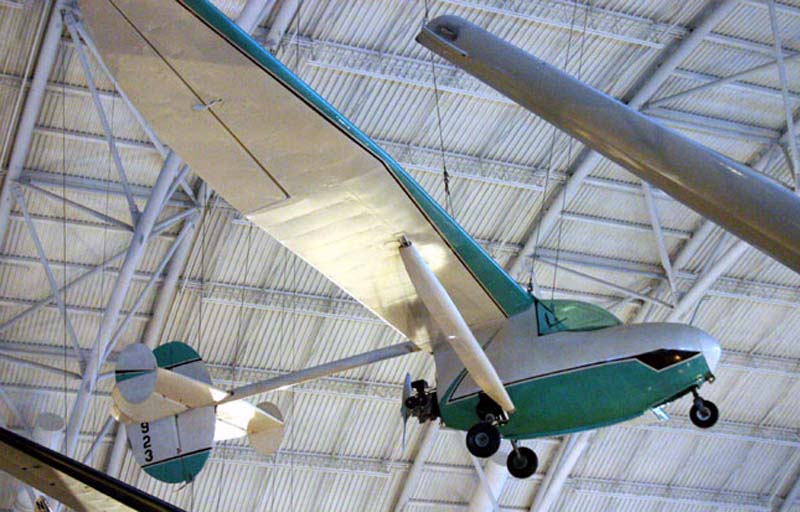| Nelson | ||||||||||||||||
 |
||||||||||||||||
|
Dragonfly Photo: Robert Deering 10/23/2006 Smithsonian National Air and Space Museum Dulles International Airport (IAD) Chantilly, Virginia |
||||||||||||||||
|
In 1945,
William H. Bowlus and Ted Nelson formed the Nelson Aircraft
Corporation to build a two-seat, motor glider version of the
popular Bowlus BA-100 Baby Albatross. The designers
nicknamed this design the Bumblebee but they sold the
powered glider under the official moniker, Dragonfly. The
men retained the basic Baby Albatross design but
significantly widened the cockpit and added side-by-side
seating and flight controls for each occupant. Other
improvements included tricycle landing gear and a steerable
nose landing gear, additional vertical fins mounted on the
ends of the horizontal stabilizer, and a hinged canopy. A
handle to pull-start the engine was also available inside
the cockpit. The aft section of the fuselage pod on the Baby
Albatross was an ideal place to install a pusher engine and
propeller. Bowlus and Nelson first selected a Ryder
four-cylinder, two-cycle power plant but this engine only
managed to produce about 16 horsepower. This was not enough
power for flight so Nelson decided to build a suitable
engine from scratch. His new motor generated 25 horsepower,
barely enough to takeoff and slowly climb. This combination of power plant and propeller allowed the Dragonfly to climb 235 feet per minute at sea level. The extra weight of the engine, plus the drag from the widened fuselage, gave the Dragonfly a mediocre lift-to-drag ratio. The self-launch capability cost too much performance to appeal to most prospective motorglider owners and Bowlus and Nelson only sold seven Dragonflys. Nelson attempted to design another self-launching glider in 1949 but this time, he teamed with Harry Perl. Don Mitchell also helped on the new airplane. Nelson and Perl called this new design the Hummingbird. Nelson mounted a more powerful Nelson engine on a retractable pylon behind a two-seat, tandem cockpit. This arrangement improved the soaring performance but the aircraft cost much more than a conventional, two-seat glider and Nelson and Perl built only six Hummingbirds. Dimensions: Wingspan: 14.4 m (47 ft 4 in) Length: 6.1 m (20 ft) Height: 2.1 m (6 ft 10 in) Weights: Empty, 263 kg (580 lb) Gross, 426 kg (940 lb) Engine: Nelson two-cylinder, two-cycle, 25 horsepower Physical Description: High-wing, semi-monocoque wooden motorglider; seats two side-by-side, powered by pusher engine mounted on aft end of fuselage pod, between twin tail booms; retractable tricycle landing gear.
Source:
Smithsonian Air & Space Museum |
||||||||||||||||
|
Source: Wikipedia |
